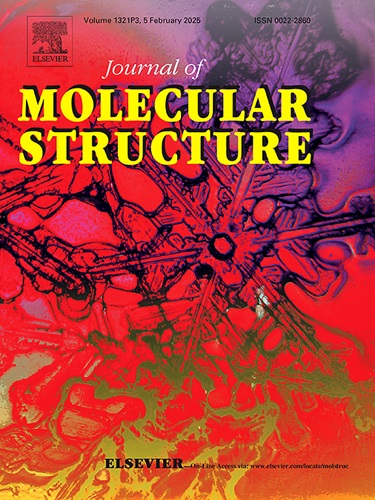The impact of transition metals in diphenylporphyrinato (DPP) on the capabilities for the electrocatalysis of oxygen reduction reaction (ORR)
IF 4
2区 化学
Q2 CHEMISTRY, PHYSICAL
引用次数: 0
Abstract
The transition metal complexed with different porphyrin-based ligands can influence the oxygen reduction reaction (ORR) capabilities in distinct ways, depending on the structure of the ligands. Therefore, the ORR capabilities of 5,15-diphenylporphyrinato (DPP) complexes with different transition metals (Fe, Co, Ni, Cu, Zn) were systematically investigated and compared, including an analysis of the kinetics mechanism in alkaline media. In this study, the electrocatalytic performance varied significantly depending on the metal center within the DPP cavity. Unlike typical porphyrin ligands, where Fe is often superior to other metals, CoDPP exhibited the highest reduction peak potential and the best current density. Using the Koutecky-Levich approach based on linear sweep voltammetry (LSV) measurements, the CoDPP complex supported on Vulcan XC 72R (CoDPP/C) emerged as the most promising catalyst, with an electron transfer number (n) of 3.37 at 0.7 V, a Tafel slope of 103 mV/dec, and an onset potential of 0.83 V in 0.1 M potassium hydroxide solution. Furthermore, the electron transfer number (n) increased to 3.67 at 0.7 V vs. RHE when 0.1 M sodium hydroxide was used as the electrolyte. This study also concludes that the kinetic mechanism of the Co metal complexed in DPP tends to follow a 4-electron transfer pathway. These findings highlight the significant influence of the metal center on the ORR catalytic activity of porphyrin complexes in alkaline conditions. Density Functional Theory (DFT) calculations provided insight into the electronic and adsorption properties of these complexes, highlighting the unique of CoDPP’s LUMO delocalization on both the cobalt center and porphyrin ring, a small HOMO-LUMO energy gap (2.51 eV), and the highest electron affinity (2.94 eV). Additionally, CoDPP exhibited the strongest oxygen adsorption energy (-2.56 eV), correlating with its superior experimental ORR performance. These findings establish a clear relationship between the electronic structure, adsorption properties, and catalytic activity of MDPP complexes, positioning CoDPP as a promising candidate for ORR and offering guidance for designing advanced porphyrin-based catalysts for energy applications.

二苯基卟啉(DPP)中过渡金属对氧还原反应(ORR)电催化性能的影响
过渡金属与不同卟啉配体的配合可以以不同的方式影响氧还原反应(ORR)的能力,这取决于配体的结构。因此,系统地研究和比较了不同过渡金属(Fe, Co, Ni, Cu, Zn)的5,15-二苯基卟啉(DPP)配合物在碱性介质中的ORR能力,并分析了其动力学机理。在本研究中,电催化性能随DPP腔内金属中心的不同而显著变化。与典型的卟啉配体不同,铁通常优于其他金属,CoDPP表现出最高的还原峰电位和最佳电流密度。利用基于线性扫描伏安法(LSV)测量的Koutecky-Levich方法,在Vulcan XC 72R (CoDPP/C)上负载的CoDPP配合物(CoDPP/C)成为最有希望的催化剂,在0.7 V时电子转移数(n)为3.37,Tafel斜率为103 mV/dec,在0.1 M氢氧化钾溶液中起始电位为0.83 V。以0.1 M的氢氧化钠为电解液,在0.7 V时,电子转移数(n)比RHE提高到3.67。本研究还得出了Co金属配合DPP的动力学机制倾向于遵循4电子转移途径。这些发现突出了金属中心对碱性条件下卟啉配合物ORR催化活性的显著影响。密度泛函理论(DFT)计算揭示了这些配合物的电子和吸附特性,强调了CoDPP在钴中心和卟啉环上的LUMO离域的独特性,较小的HOMO-LUMO能隙(2.51 eV)和最高的电子亲和力(2.94 eV)。此外,CoDPP表现出最强的氧吸附能(-2.56 eV),这与其优越的实验ORR性能有关。这些发现建立了MDPP配合物的电子结构、吸附性能和催化活性之间的明确关系,将CoDPP定位为ORR的有希望的候选者,并为设计用于能源应用的先进卟啉基催化剂提供指导。
本文章由计算机程序翻译,如有差异,请以英文原文为准。
求助全文
约1分钟内获得全文
求助全文
来源期刊

Journal of Molecular Structure
化学-物理化学
CiteScore
7.10
自引率
15.80%
发文量
2384
审稿时长
45 days
期刊介绍:
The Journal of Molecular Structure is dedicated to the publication of full-length articles and review papers, providing important new structural information on all types of chemical species including:
• Stable and unstable molecules in all types of environments (vapour, molecular beam, liquid, solution, liquid crystal, solid state, matrix-isolated, surface-absorbed etc.)
• Chemical intermediates
• Molecules in excited states
• Biological molecules
• Polymers.
The methods used may include any combination of spectroscopic and non-spectroscopic techniques, for example:
• Infrared spectroscopy (mid, far, near)
• Raman spectroscopy and non-linear Raman methods (CARS, etc.)
• Electronic absorption spectroscopy
• Optical rotatory dispersion and circular dichroism
• Fluorescence and phosphorescence techniques
• Electron spectroscopies (PES, XPS), EXAFS, etc.
• Microwave spectroscopy
• Electron diffraction
• NMR and ESR spectroscopies
• Mössbauer spectroscopy
• X-ray crystallography
• Charge Density Analyses
• Computational Studies (supplementing experimental methods)
We encourage publications combining theoretical and experimental approaches. The structural insights gained by the studies should be correlated with the properties, activity and/ or reactivity of the molecule under investigation and the relevance of this molecule and its implications should be discussed.
 求助内容:
求助内容: 应助结果提醒方式:
应助结果提醒方式:


